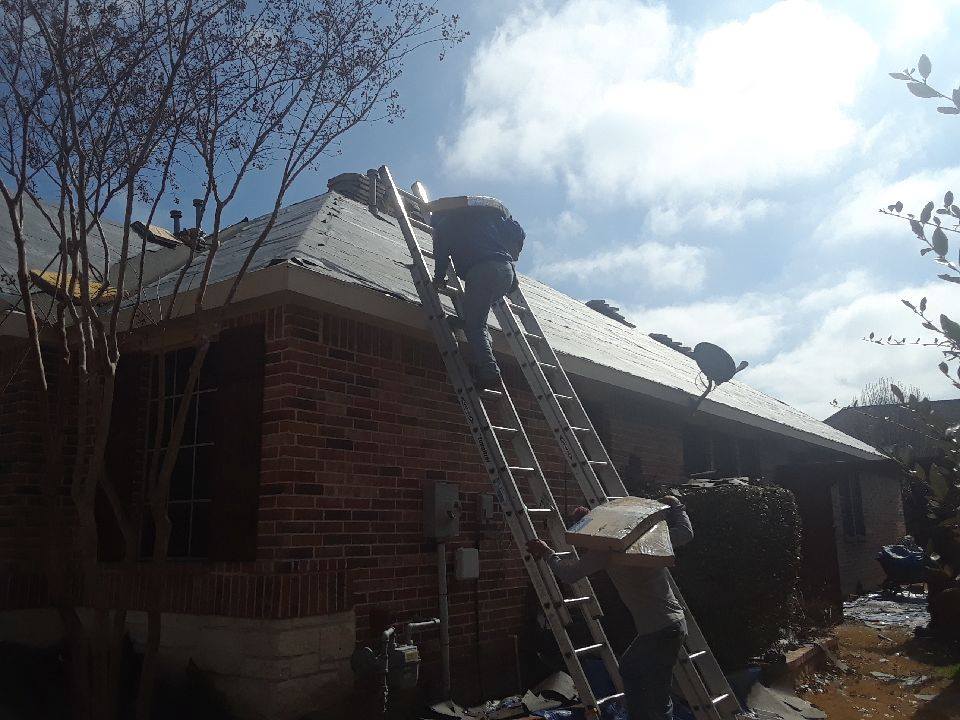Common Roofing Issues in Texas: What Every Homeowner Needs to Know
Addressing Local Challenges: Your Guide to Texas Roof Protection
Texas homeowners face some of the most demanding weather conditions in the nation, and your roof bears the brunt of Mother Nature’s extremes. At Texas Roofing Pro, we’ve spent over fifteen years helping families across the Lone Star State protect their most valuable investment—their home. From the scorching heat of summer to devastating hailstorms and powerful winds, we understand the unique challenges that Texas weather presents to your roofing system.
Our team of certified roofing professionals has witnessed how Texas consistently leads the United States in hail events, and we’ve seen how unprepared homeowners can face thousands of dollars in unexpected repairs. We’re committed to not just fixing roofs, but educating our community about prevention, early detection, and proper maintenance. Understanding these common roofing issues can save you significant time, money, and stress while ensuring your family stays safe and comfortable year-round.

Heat and UV Damage: The Silent Roof Killer
The relentless Texas sun poses one of the most persistent threats to your roofing system. In extreme heat, roof surfaces can exceed 150°F, especially with traditional dark asphalt shingles, creating conditions that accelerate aging far beyond normal wear patterns.
Thermal Expansion and Contraction High temperatures cause materials to expand during scorching days, followed by contraction during cooler nights. This constant cycle creates tremendous stress on your roofing materials, leading to cracks, gaps, and weakened seams throughout your system. Dark-colored shingles absorb more heat, potentially accelerating deterioration even further.
UV Radiation Damage Ultraviolet rays break down the chemical bonds of roofing materials over time. This manifests as brittle, cracking shingles that lose their protective granules, fading color, and curling edges that compromise water-shedding capabilities. Watch for discoloration, curling shingles, and granules accumulating in gutters—these indicate heat-related damage requiring professional attention.
Hailstorm Damage: Texas’s Costliest Weather Threat
Texas experiences more severe hailstorms than virtually any other state, with recent severe weather events affecting tens of thousands of homes in single storms. Hailstones ranging from pea-sized to softball-sized can cause devastating damage to unprepared roofing systems.
Impact Damage Patterns Hail damage varies significantly by roofing material. Asphalt shingles lose protective granules, leaving rough or bald spots that expose underlying materials. Metal roofs show denting or impact marks that can compromise their weather-tight seal, while tile roofs can crack or chip when struck by large hailstones. Not all damage is immediately visible—bruises or cracks may not leak initially but will fail during future weather events.
Post-Storm Actions After any hailstorm, conduct a visual inspection from ground level and check gutters for unusual amounts of granules. Inspect gutters and downspouts for dents or holes that indicate storm intensity, and contact professionals for thorough assessment of potential hidden damage.
Wind and Storm Damage: When Nature Flexes Its Muscles
Wind speeds exceeding 50 mph can cause severe damage, especially to shingle roofs. Texas thunderstorms and severe weather systems regularly produce winds well above this threshold, creating multiple types of roof damage that can compromise your home’s protection.
Shingle Uplift and Debris Impact Wind creates pressure differences that lift shingles from secure positions, and strong winds can completely remove improperly secured or aging shingles. Texas storms often carry substantial debris—tree branches, patio furniture, and other projectiles—that can create punctures, cracks, or dents compromising your roof’s integrity. This debris impact can cause immediate damage or create vulnerable spots that fail during subsequent weather events.
Moisture and Humidity: The Hidden Destroyer
Texas’s humid climate, especially in coastal regions and during summer months, creates perfect conditions for mold, mildew, and rot development. Water vapor condensation collects in attics and on shingles, causing mold and mildew growth that leads to roof sheathing rot and splitting.
Poor attic ventilation exacerbates these issues by trapping humid air and preventing proper moisture management. This combination of heat and humidity forces homeowners to constantly run HVAC systems, creating additional condensation that can cause severe respiratory issues for families while damaging the roof from both inside and out.
Seasonal Temperature Fluctuations: Year-Round Challenges
Dramatic temperature swings between Texas summers and winters create additional stress on roofing materials. While snow is uncommon in most Texas regions, freezing temperatures cause roof contraction, leading to lost elasticity and resulting in cracks or splitting of shingles and components.
Colder temperatures combined with water that freezes from light drizzle can cause roofs to lose flexibility over time. Though rare, ice dams can form on roof edges during freezing weather, preventing proper drainage and potentially causing water to seep into your home’s interior spaces.
Protecting Your Investment: Prevention and Professional Care
The key to managing Texas roofing challenges lies in proactive maintenance and professional expertise. Regular roofing inspections, preferably at least once a year, help identify minor issues before they become major problems that require expensive repairs or complete replacement.
Professional Benefits Detailed annual inspections provide invaluable documentation for insurance claims when storm damage occurs. Our certified technicians identify potential weak spots, assess existing damage, and provide recommendations for repairs or preventive measures. Choosing the right materials for Texas conditions—like hail-resistant asphalt shingles or reflective metal roofing—significantly impacts longevity and performance against our state’s challenging climate.
Maintenance Best Practices Regular maintenance includes keeping gutters clean, trimming overhanging tree branches, ensuring proper attic ventilation, and addressing minor repairs promptly before they escalate into major problems. These proactive steps can extend your roof’s lifespan significantly while protecting your family and property.
At Texas Roofing Pro, we believe that informed homeowners make better decisions about their roofing needs. Understanding these common Texas roofing challenges empowers you to protect your investment and maintain your family’s safety and comfort throughout the year.
Don’t wait for the next storm to test your roof’s resilience. Contact Texas Roofing Pro today for your comprehensive roof inspection and let our experts ensure your home is protected against Texas’s toughest weather challenges!

